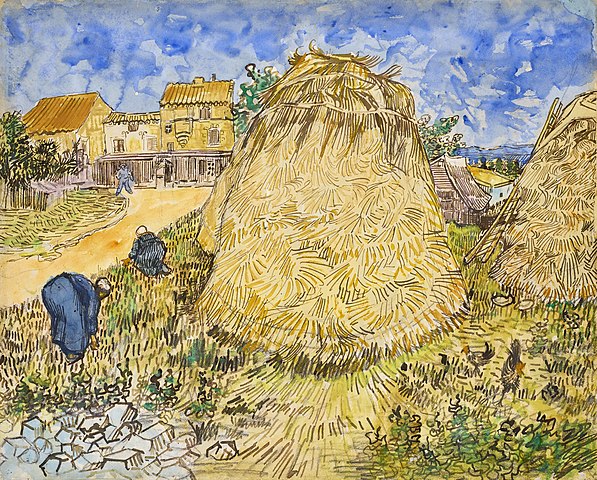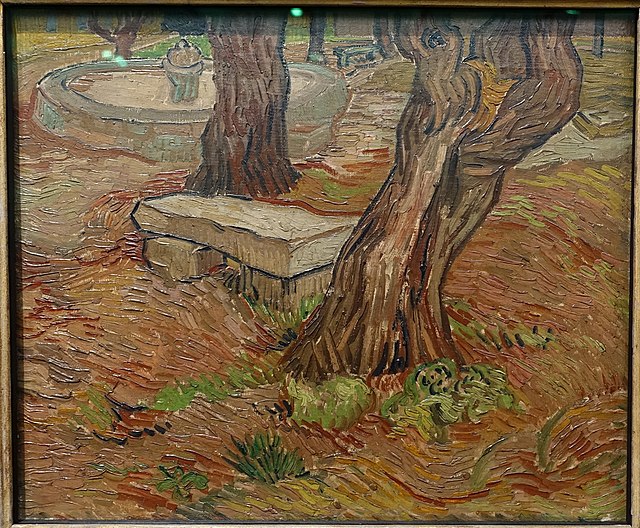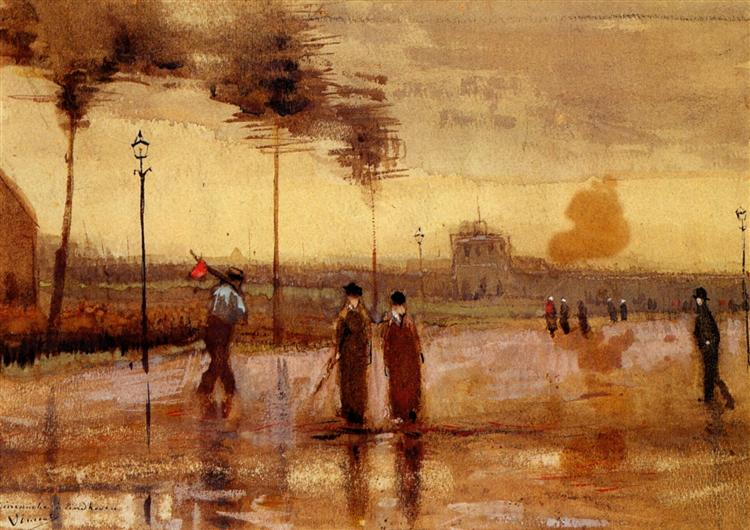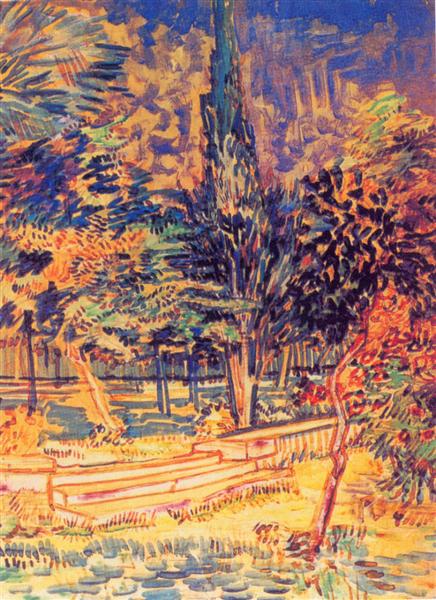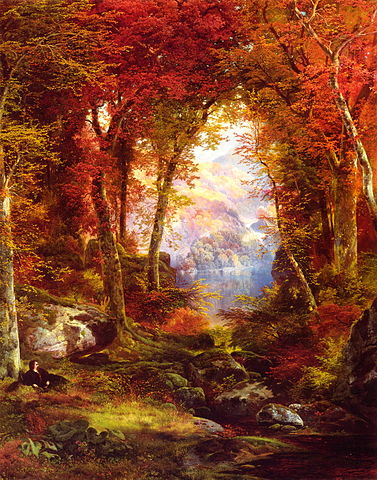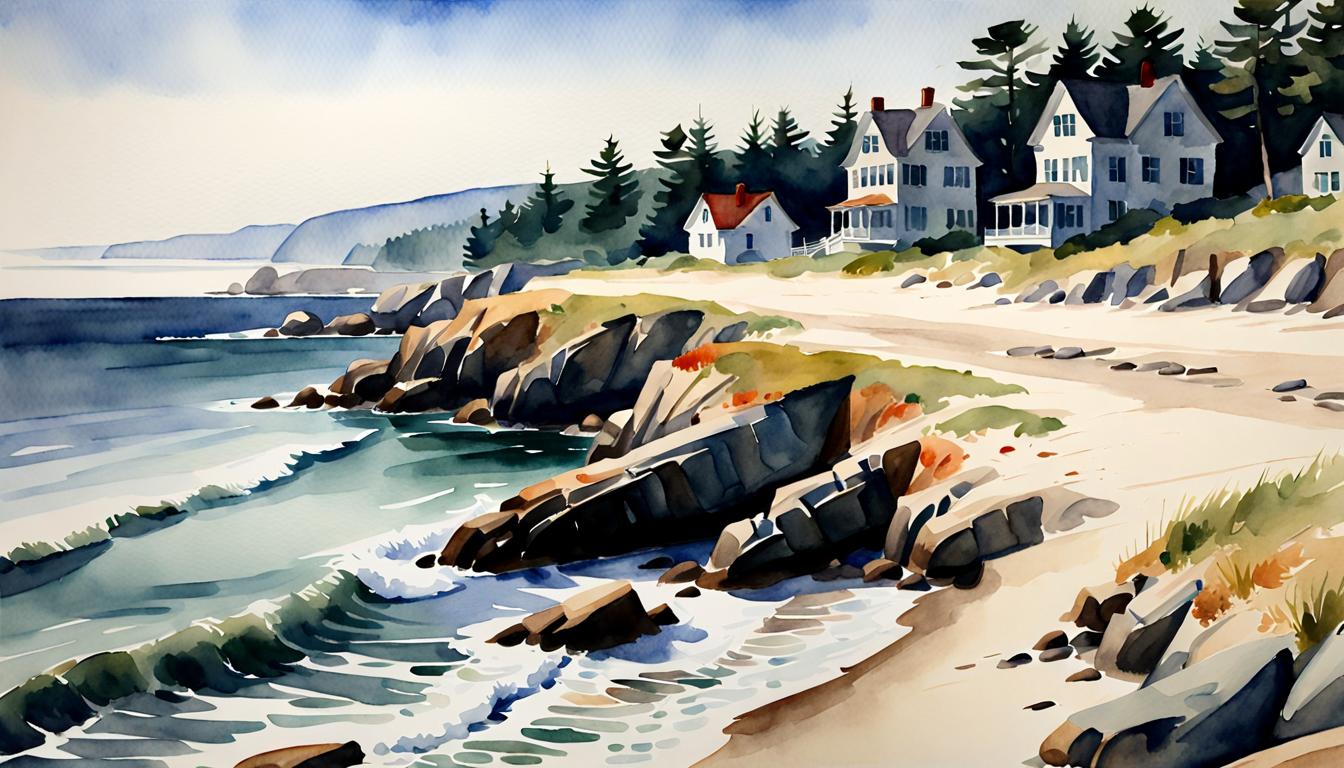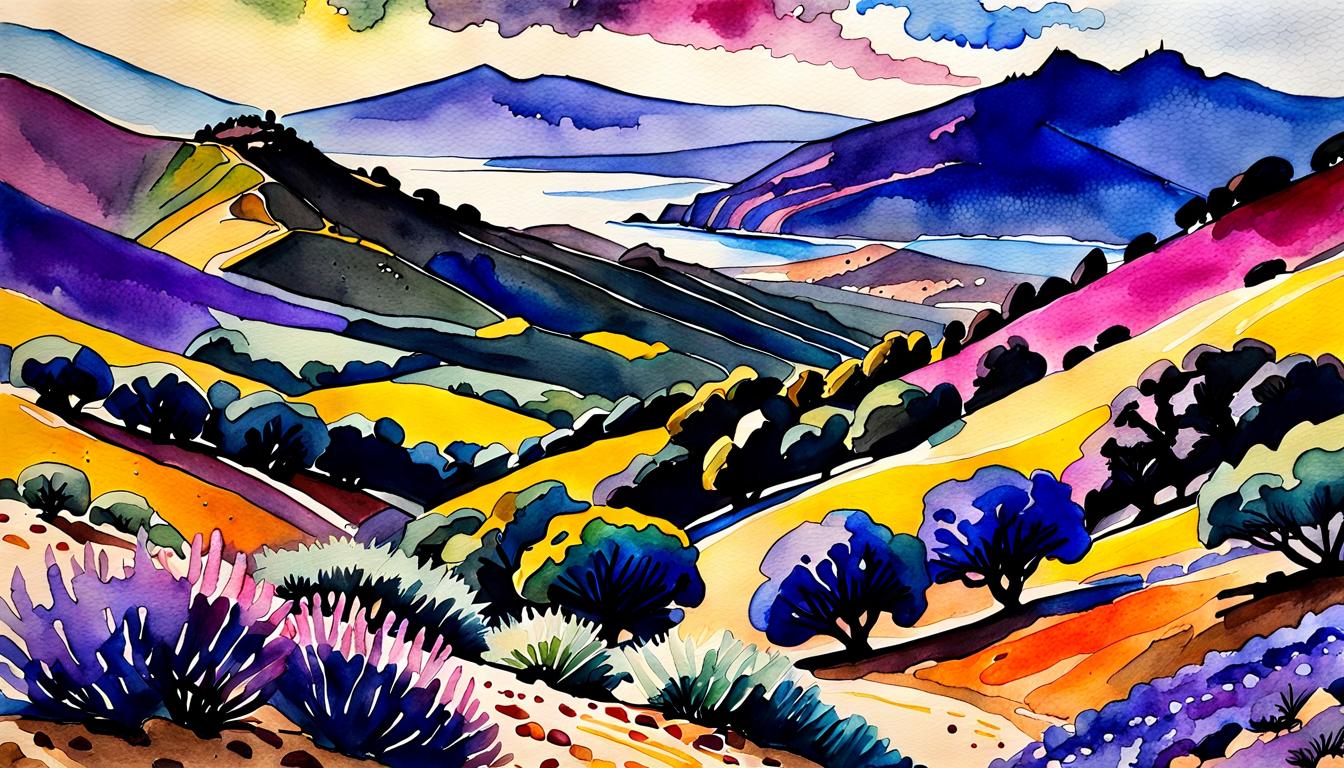Step into the world of Vincent van Gogh, a visionary artist whose vibrant brushstrokes and emotional intensity have captivated art enthusiasts for generations. While he is widely known for his iconic oil paintings, it is the lesser-known Vincent van Gogh watercolor masterpieces that offer a truly unique glimpse into the beauty and simplicity of his artistic genius.
Inspired by Vincent van Gogh – an interpretation of Field of Poppies
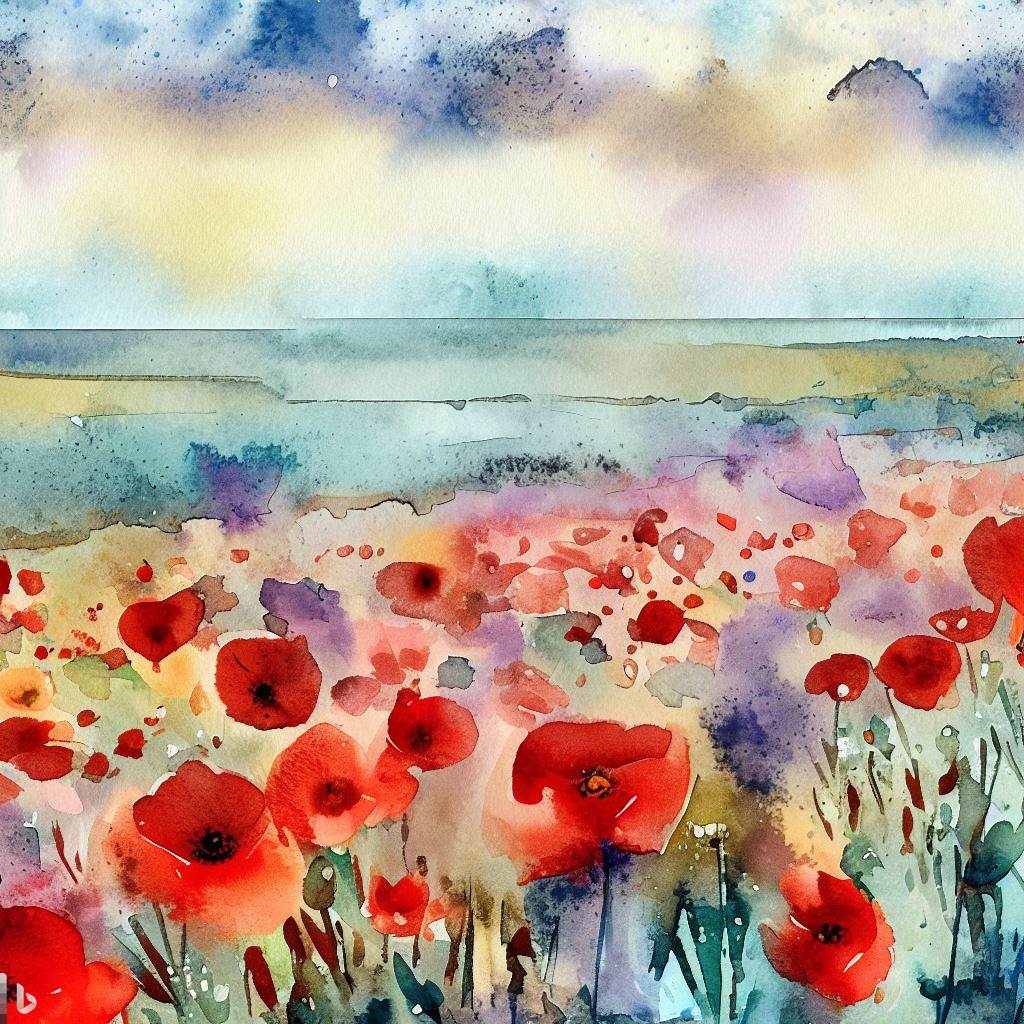
Van Gogh’s watercolors reveal a different side of the artist, showcasing his delicate touch, fluidity of movement, and ability to capture the essence of a subject with remarkable precision. Each brushstroke tells a story, as the interplay of colors and textures brings to life landscapes, still lifes, and portraits in a way that only Van Gogh could.
Join us as we explore the enchanting world of Van Gogh’s watercolor artworks, and discover the hidden depths of his artistic brilliance. Get ready to immerse yourself in a world where simplicity meets profound beauty, as we unravel the allure of Van Gogh’s watercolor masterpieces.
The Significance of Watercolor in Van Gogh’s artistic journey
Watercolor played a significant role in Van Gogh’s artistic journey, serving as a medium through which he could experiment and refine his techniques. Unlike oil paintings, watercolor allowed Van Gogh to work quickly and spontaneously, capturing his immediate impressions of the world around him. Through watercolor, he was able to explore the delicate balance between control and spontaneity, allowing his emotions and intuition to guide the brush.
In his letters to his brother Theo, Van Gogh often expressed his love for the medium, describing it as “the most beautiful of all techniques.” He saw watercolor as a means of capturing the fleeting moments of life, the transient beauty that exists in nature and everyday scenes. With its transparent layers and luminous quality, watercolor allowed Van Gogh to create a sense of depth and atmosphere, enhancing the emotional impact of his paintings.
Watercolor also offered Van Gogh the opportunity to experiment with different techniques and effects. He would often dilute the pigments with water, creating washes and glazes that added a sense of movement and fluidity to his works. This experimentation with texture and transparency allowed Van Gogh to push the boundaries of traditional watercolor painting, creating a style that was uniquely his own.
Exploring Van Gogh’s Watercolor Techniques
Van Gogh’s watercolor techniques were characterized by his bold use of color, loose brushwork, and expressive mark-making. He would often work quickly, applying washes of color in broad strokes, allowing the pigments to blend and bleed together on the paper. This spontaneous approach gave his watercolors a sense of energy and vitality, capturing the essence of a subject in a way that was both dynamic and immediate.
One of Van Gogh’s signature techniques was the use of wet-on-wet painting. By wetting the page before applying the paint, he was able to create soft, blended edges and smooth transitions between colors. This technique allowed him to achieve a sense of harmony and unity in his watercolor paintings, as the colors seamlessly flowed into one another.
Another technique employed by Van Gogh was the use of dry brush. By using a dry brush with very little water, he could create textured effects and add detail to his paintings. This technique added a sense of depth and dimension to his watercolors, enhancing the overall visual impact of the artwork.
Themes and subjects in Van Gogh’s watercolor paintings
Van Gogh’s watercolor paintings encompass a wide range of themes and subjects, reflecting his fascination with the world around him. He often painted landscapes, capturing the beauty of nature in all its forms. From sweeping vistas to intimate studies of trees and flowers, Van Gogh’s watercolor landscapes evoke a sense of tranquility and harmony.
In addition to landscapes, Van Gogh also painted still lifes in watercolor, depicting everyday objects such as flowers, fruit, and household items. These still-lifes were not mere representations of objects, but reflections of Van Gogh’s inner world. Through his use of color and composition, he imbued these seemingly ordinary subjects with a sense of vitality and emotion.
Portraits were another subject that Van Gogh explored in watercolor. His portraits captured the essence of the sitter, conveying their personality and inner turmoil. With his deft brushwork and expressive use of color, Van Gogh was able to breathe life into his watercolor portraits, creating works that were both intimate and captivating.
Analysis of Van Gogh Watercolor Masterpieces
Van Gogh’s watercolor masterpieces are a testament to his artistic genius and his ability to capture the beauty and simplicity of the world around him.
“Stone Bench in the Garden of the Asylum,” “Stone Steps in the Garden of the Asylum,” “Sunday in Eindhoven, A,” “Three Woodcutters Walking,” “Tree Roots in a Sandy Ground,” are among Vincent van Gogh’s notable watercolor paintings. These watercolors showcase Van Gogh’s remarkable use of color and artistic evolution. Van Gogh produced a total of 145 watercolors over the course of his career, and these works distinguish themselves as a vibrant and important part of his overall portfolio
“Wheat Stacks“: vibrant watercolor of wheat stacks in a Provençal farmyard, painted at the beginning of June 1888 when Van Gogh was working in Arles. This watercolor was sold at Christie’s in New York in 2021 for a record 35.85 million USD
Van Gogh’s approach to capturing light and color in watercolor
One of the defining characteristics of Van Gogh’s watercolor paintings is his ability to capture the interplay of light and color. He had a keen eye for observing the subtle nuances of light and how it transformed the world around him. Through his use of vibrant, expressive colors and bold contrasts, Van Gogh was able to convey the ever-changing nature of light and its impact on the mood and atmosphere of a scene.
In his watercolors, Van Gogh often used complementary colors to create a sense of harmony and balance. He understood how these contrasting colors could intensify each other, creating a visual impact that was both striking and harmonious. By capturing the interplay of complementary colors, Van Gogh was able to infuse his watercolors with a sense of energy and vibrancy.
Van Gogh also paid close attention to the tonal values within a scene, using light and shade to create depth and dimension. Through the careful placement of light and dark areas, he was able to give his watercolor paintings a sense of volume and three-dimensionality. This mastery of light and shade added a sense of realism and depth to his works, enhancing their visual impact.
The emotional depth in Van Gogh’s watercolor artworks
Van Gogh’s watercolor artworks are not only visually captivating, but they also possess a deep emotional resonance. Through his use of color, brushwork, and composition, Van Gogh was able to convey his innermost thoughts and emotions. His watercolors are a reflection of his own struggles and his relentless pursuit of beauty and meaning in the world.
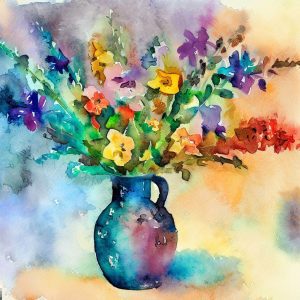
Van Gogh often used color to convey emotion in his watercolor paintings. He would use vibrant, bold colors to express joy and vitality, while darker, more somber colors were employed to convey sadness and introspection. Through his expressive brushwork, he was able to capture the essence of a subject, conveying its emotional impact with remarkable precision.
The subjects of Van Gogh’s watercolor artworks also played a significant role in evoking emotion. Whether it was a serene landscape, a vibrant still life, or an intimate portrait, each subject was carefully chosen to communicate a specific mood or feeling. Van Gogh’s ability to infuse his watercolors with a sense of emotion is what sets his artworks apart and makes them truly timeless.
Van Gogh’s influence on the watercolor medium
Van Gogh’s watercolor artworks have had a profound influence on the medium, inspiring countless artists to explore its possibilities. His bold use of color, expressive brushwork, and experimental techniques pushed the boundaries of traditional watercolor painting, opening up new avenues of creative expression.
Many artists have been inspired by Van Gogh’s watercolor techniques and have incorporated them into their own works. His ability to capture the essence of a subject with simplicity and precision continues to be a source of inspiration for artists today. Van Gogh’s watercolor artworks serve as a reminder that beauty can be found in the simplest of things and that the true essence of art lies in its ability to evoke emotion and touch the soul.
Where to view Van Gogh’s Paintings
Van Gogh’s watercolor paintings can be viewed at various museums and art institutions around the world. The Van Gogh Museum in Amsterdam houses a significant collection of his artworks, including a number of watercolor pieces. The museum offers a comprehensive look into Van Gogh’s artistic journey, allowing visitors to appreciate the beauty and simplicity of his watercolor masterpieces.
In addition to the Van Gogh Museum, other museums and galleries also exhibit Van Gogh’s watercolor paintings. These include the Museum of Fine Arts in Boston, the Art Institute of Chicago, and the Metropolitan Museum of Art in New York. Visiting these institutions provides an opportunity to experience the allure of Van Gogh’s watercolor artworks firsthand, and to immerse oneself in the world of this extraordinary artist.
Top 10 van Gogh Masterpieces
| Title | Location | Description |
|---|---|---|
| The Starry Night | Museum of Modern Art, New York | A depiction of the view from Van Gogh’s asylum room, with swirling stars and a bright crescent moon. |
| Irises | J. Paul Getty Museum, Los Angeles | A vibrant and colorful painting of irises in a garden. |
| Wheatfield with Crows | Van Gogh Museum, Amsterdam | A dark and ominous painting of a wheat field with crows flying overhead. |
| Almond Blossom | Van Gogh Museum, Amsterdam | A beautiful and delicate painting of almond blossoms against a blue sky. |
| The Potato Eaters | Van Gogh Museum, Amsterdam | A somber and realistic painting of a family of potato farmers eating their dinner. |
| Sunflowers | National Gallery, London | A series of paintings of sunflowers in a vase, each with a unique color palette. |
| The Bedroom | Van Gogh Museum, Amsterdam | A painting of Van Gogh’s bedroom in the Yellow House in Arles, with bright colors and bold lines. |
| The Sower | Kröller-Müller Museum, Otterlo | A painting of a sower in a field, with a bright blue sky and vibrant green grass. |
| The Olive Trees | Museum of Modern Art, New York | A series of paintings of olive trees, each with a unique color palette and texture. |
| Fishing Boats on the Beach at Saintes-Maries | Van Gogh Museum, Amsterdam | A painting of fishing boats on the beach, with bright colors and bold lines. |
Conclusion: Appreciating the beauty and simplicity of Van Gogh’s watercolor masterpieces
Van Gogh’s watercolor masterpieces offer a unique glimpse into the beauty and simplicity of his artistic genius. Through his delicate touch, fluidity of movement, and ability to capture the essence of a subject, Van Gogh created watercolor artworks that continue to captivate and inspire. His use of vibrant colors, bold brushwork, and emotive compositions make his watercolors truly remarkable.
By exploring Van Gogh’s watercolor techniques, themes, and subjects, we gain a deeper understanding of the artist’s creative process and his relentless pursuit of beauty. Van Gogh’s watercolor paintings not only capture the external world but also convey his innermost thoughts and emotions. They serve as a reminder that art has the power to move us and touch our souls, and that beauty can be found in the simplest of things.
So, step into the enchanting world of Van Gogh’s watercolor masterpieces and let yourself be swept away by their profound beauty. Discover the hidden depths of his artistic brilliance and experience the magic of simplicity. Van Gogh’s watercolors are a testament to the enduring power of art and the indomitable spirit of a visionary artist.
